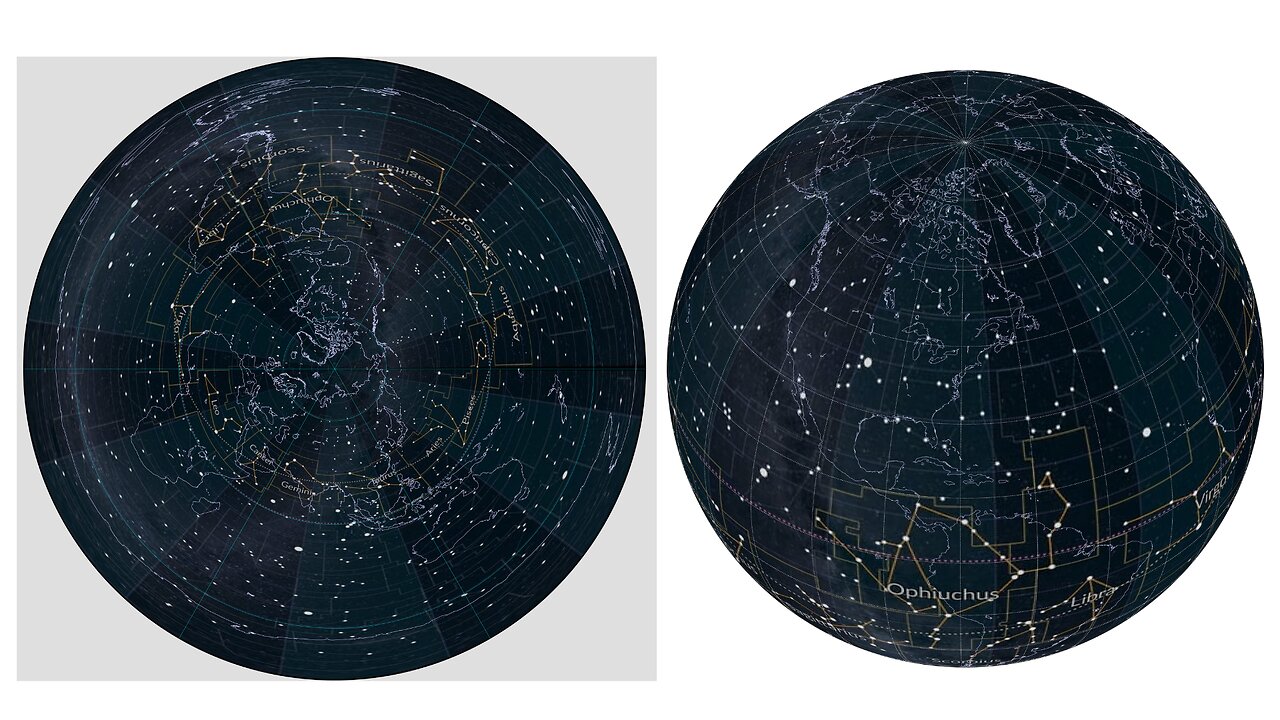Premium Only Content

What is the local celestial sphere?
What is the local celestial sphere?
(going to need this for tomorrow)
The local celestial sphere is a conceptual model used in astronomy to describe the sky as seen from a specific location on the Earth's surface. It is a sphere of an arbitrary large radius, centered on the observer, onto which all celestial objects (stars, planets, the Moon, and the Sun) are projected. This model helps in understanding the apparent motions of celestial objects as observed from Earth.
Key Concepts
Celestial Equator: An imaginary line on the celestial sphere, directly above the Earth's equator.
Divides the celestial sphere into the northern and southern celestial hemispheres.
Celestial Poles: The points on the celestial sphere where the Earth's rotational axis, if extended infinitely, intersects the sphere.
North Celestial Pole (near Polaris) and South Celestial Pole.
Zenith: The point directly overhead an observer on the celestial sphere.
Unique to each observer's location.
Nadir: The point directly opposite the zenith, beneath the observer.
Horizon: The boundary line dividing the visible sky from the part of the sky obscured by the Earth.
At a specific location, it's a great circle 90 degrees from the zenith.
Altitude and Azimuth: Altitude: The angle between an object in the sky and the observer's local horizon.
Azimuth: The angle between the north direction and the projection of the object on the horizon, measured clockwise from the north.
Ecliptic: The apparent path of the Sun on the celestial sphere over the course of a year.
Tilted relative to the celestial equator by approximately 23.5 degrees due to the tilt of the Earth's axis.
Uses of the Local Celestial Sphere
Celestial Navigation: Measuring the angles between celestial objects and the horizon to determine latitude and longitude.
Explains the apparent daily motion of stars (diurnal motion) due to the Earth's rotation.
Helps in understanding the annual movement of the Sun along the ecliptic.
How the Local Celestial Sphere is Visualized
Imagine standing on a flat, open plain with a clear view of the sky. The celestial sphere would appear as a vast, dome-like structure overhead. Here's how you can visualize it:
Celestial Equator: As you stand on the equator, the celestial equator passes directly overhead. If you move towards the poles, the celestial equator tilts towards the horizon.
Celestial Poles: As you move northward, the North Celestial Pole rises higher in the sky. At the North Pole, the North Celestial Pole is directly overhead, and the celestial equator is at the horizon.
Stars: Stars are projected onto this sphere. As the Earth rotates, they appear to move along circular paths parallel to the celestial equator.
Easy concept, but it functions on a plane earth the same way it does on an imagined globe. In fact, this is what the globe is created from, to ensure the measurements are valid and would not be noticeable....
-
 2:29:41
2:29:41
Anti-Disinfo League
8 days agoAether Physics - Come challenge us
522 -
 2:41:03
2:41:03
I_Came_With_Fire_Podcast
17 hours ago🔥🔥Suing CHINA, Hillary AIDED RUSSIA, and DEI REMOVED from Military🔥🔥
117K28 -
 LIVE
LIVE
SoniCentric
18 hours agoCozy Up With SNOWY Lakeside Cabin Jazz Vibes
810 watching -
 1:36:16
1:36:16
PMG
1 day ago $1.34 earnedSPECIAL: JUSTICE FOR JEREMY - NOW!
49.7K4 -
 1:01:01
1:01:01
TheTapeLibrary
20 hours ago $4.16 earnedThe Horrifying True Story of Summerwind Mansion
56.3K7 -
 29:28
29:28
Afshin Rattansi's Going Underground
1 day agoMax Blumenthal on US’ Ukraine Aid Corruption, 'Psychotic' Israel Turning the West Bank into Gaza
55.7K4 -
 57:12
57:12
Flyover Conservatives
1 day agoCovid, Control, & Corruption —Dr. Stella Immanuel’s Plan to BEAT the System! | FOC Show
42.2K -
 57:13
57:13
Sarah Westall
13 hours agoUnited States in a Two Front War, Identify Military Psyops and Special Operations w/ Jeffrey Prather
78.2K21 -
 2:14:05
2:14:05
Quite Frankly
16 hours ago"Open Phones: Philly & D.C. Crashes" 1/31/25
62.8K27 -
 1:45:32
1:45:32
2 MIKES LIVE
16 hours ago2 MIKES LIVE #173 Open Mike Friday!
58.3K1